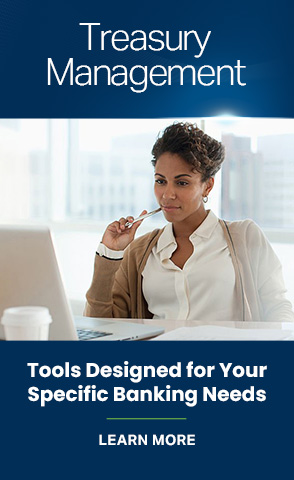Home / Business Banking / Treasury Management / Insights & Security / Steps to Reduce the Possibility of Check Fraud
Steps to Reduce the Possibility of Check Fraud
Reconcile accounts promptly.
- Stay vigilant by reviewing items and reconciling your account on a daily basis. Verify that the check amount and payee match your records. Report any suspicious or unauthorized activity to us IMMEDIATELY.
- Report any irregularities to CNB by 9:30 a.m. Do not wait until the end of the month to reconcile your account.
- It is critical to always have at least one backup person responsible for reconciling your account when the primary person is unavailable.
Utilize ACH payments.
ACH payments are automated between financial institutions with money being transferred electronically between them. With this payment method, there is no risk of a check being stolen or used fraudulently.

Use a Positive Pay service.
This is possibly the best strategy for detecting check fraud. Ask us for details.
Order checks through your bank.
Security features such as watermarks and reactive paper make it difficult to duplicate or tamper with a check. Other lower-cost options may not include these security features.
Properly fill out checks.
- Use the entire name of the company or individual and do not use abbreviations.
- Indicate the amount of the check with both numbers and words, and spell out the amount completely.
- Fill in the available space for all blocks and lines. If your entry does not fill the entire box or line, draw a line to the end of the space. This prevents criminals from making alterations such as adding zeros or alternative payees.
Avoid mailing checks in window envelopes.
Window envelopes make it too easy for criminals to identify a check.
Divide employee duties and educate your team.
- The person who issues checks should not be the same person who signs checks and reconciles bank statements.
- Check signers should not have access to blank checks or the ability to enter transactions into the accounting system.
- Stay informed about the latest check fraud trends and educate your team on the best practices to detect fraud.
Ready to win the fight against fraud?






